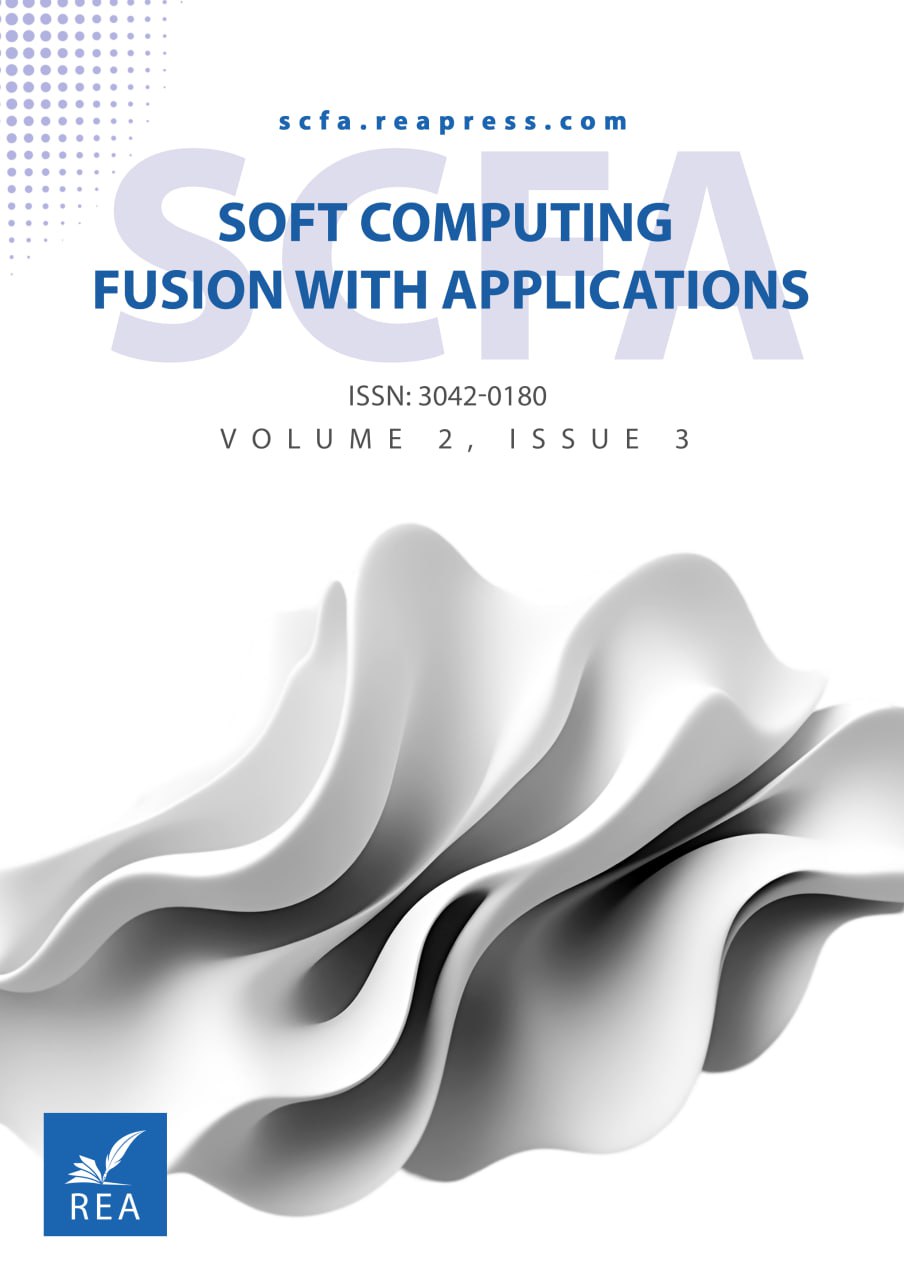Digital Twin and Metaverse Integration for Predictive Traffic Management in Malaysian Smart Cities: A Fuzzy Multi-Criteria Decision-Making Approach
Abstract
The rapid urbanization of Malaysian cities like Kuala Lumpur has intensified the demand for intelligent, sustainable traffic management systems. This study proposes an integrated framework that combines digital twin technology, metaverse-based visualization, Internet of Things (IoT)-driven real-time data, and Fuzzy Multi-Criteria Decision-Making (MCDM) methods to address the inherent uncertainty and complexity of predictive traffic routing. Key evaluation criteria—cost, speed, fuel efficiency, CO₂ emissions, user comfort, and infrastructure adaptability—were identified through expert consultations. A Fuzzy Analytical Hierarchy Process (AHP) model was developed to rank alternative traffic management solutions. In the case study of Kuala Lumpur's Central Business District (CBD), simulations using a digital twin environment and live IoT feeds indicated that adaptive traffic signaling emerged as the most preferred strategy with a fuzzy weighted score of 0.362, followed by congestion pricing (0.289) and dedicated bus lanes (0.221). Sensitivity analysis revealed that a 10% change in the weight of CO₂ emissions shifted the optimal strategy towards congestion pricing, highlighting the model’s adaptability to varying stakeholder priorities. Incorporating a metaverse-based Virtual Reality (VR) interface enabled decision-makers and citizens to experience the impact of different traffic policies visually, fostering greater transparency and engagement. Integrating fuzzy methodologies effectively addressed the uncertainties associated with expert judgments and real-time data variability. The proposed model offers a dynamic, robust, and user-centered decision-support tool for sustainable urban traffic management in Malaysia. The framework also presents significant potential for application in broader smart city planning initiatives across Southeast Asia.
Keywords:
Digital twin, Metaverse, Internet of things, Fuzzy analytical hierarchy process, Traffic management, Predictive routing, Smart citiesReferences
- [1] Yasin, M. Y., Zain, M. A. B. M., & Hassan, M. H. Bin. (2022). Urbanization and growth of Greater Kuala Lumpur: Issues and recommendations for urban growth management. Southeast Asia: A multidisciplinary journal, 22(2), 4–19. https://doi.org/10.1108/SEAMJ-02-2022-B1002
- [2] Javaid, S., Ali, W., Sadia, S., & Abidi, N. (2025). Optimizing the electrical vehicle parking and charging assignments: A balanced approach using mathematical modeling. Life cycle reliability and safety engineering, 14(2), 167–182. https://doi.org/10.1007/s41872-024-00293-3
- [3] Al-Raeei, M. (2025). The smart future for sustainable development: Artificial intelligence solutions for sustainable urbanization. Sustainable development, 33(1), 508–517. https://doi.org/10.1002/sd.3131
- [4] Leong, W. Y., Heng, L. S., & Leong, Y. Z. (2023). Smart city initiatives in malaysia and southeast Asia. 12th international conference on renewable power generation (RPG 2023) (pp. 1143–1149). Institution of engineering and technology. https://doi.org/10.1049/icp.2023.2440
- [5] Kušić, K., Schumann, R., & Ivanjko, E. (2023). A digital twin in transportation: Real-time synergy of traffic data streams and simulation for virtualizing motorway dynamics. Advanced engineering informatics, 55, 101858. https://doi.org/10.1016/j.aei.2022.101858
- [6] Nechesov, A., Dorokhov, I., & Ruponen, J. (2025). Virtual cities: From digital twins to autonomous AI societies. IEEE access, 13, 13866–13903. https://doi.org/10.1109/ACCESS.2025.3531222
- [7] Alabool, H. M. (2025). Large language model evaluation criteria framework in healthcare: Fuzzy MCDM approach. Springer nature computer science, 6(1), 57. https://doi.org/10.1007/s42979-024-03533-6
- [8] Ali, W., Javaid, S., & Akbar, U. (2025). A solution of mathematical multi-objective transportation problems under uncertain environments. Palestine journal math, 14(1), 987–1014. https://www.researchgate.net/publication/390528212
- [9] Ali, W., Sadia, S., Ahmad, F., Javaid, S., & Abidi, N. (2025). A solution programming approaches on the multi-objective capacitated fractional transportation problem. International journal of system assurance engineering and management. https://doi.org/10.1007/s13198-024-02698-w
- [10] Talib, R., & Taib, R. M. (2024). Building a greener future: Kuala Lumpur’s smart city initiatives and carbon emission reduction. CAFEO 41 engineering conference proceeding (pp. 108-115). CAFEO. https://B2n.ir/ey8187
- [11] Adnan, N., Rashed, M. F., & Ali, W. (2024). Embracing the metaverse: Cultivating sustainable tourism growth on a global scale. Current issues in tourism, 1–20. https://doi.org/10.1080/13683500.2024.2390678
- [12] Ali, W., Sadia, S., Javaid, S., & Abidi, N. (2025). Solving the multi-objective linear plus linear fractional programming problem using different mathematical programming approaches. Palestine journal of mathematics, 14(1), 1015–1040. https://www.researchgate.net/publication/390528698
- [13] Dasgupta, S., Rahman, M., & Jon, S. (2024). Harnessing digital twin technology for adaptive traffic signal control: Improving signalized intersection performance and user satisfaction. IEEE internet of things journal, 11(22), 36596–36618. https://doi.org/10.1109/JIOT.2024.3420439
- [14] Waqar, A., Othman, I., Almujibah, H., Khan, M. B., Alotaibi, S., & Elhassan, A. A. M. (2023). Factors influencing adoption of digital twin advanced technologies for smart city development: Evidence from Malaysia. Buildings, 13(3), 775. http://dx.doi.org/10.3390/buildings13030775
- [15] Homaei, M., Mogollón-Gutiérrez, Ó., Sancho, J. C., Ávila, M., & Caro, A. (2024). A review of digital twins and their application in cybersecurity based on artificial intelligence. Artificial intelligence review, 57(8), 201. https://doi.org/10.1007/s10462-024-10805-3
- [16] D, M., Alaswad, F., Aljaddouh, B., Ranganayagi, L., & R, S. (2025). AI-powered traffic management: Improving congestion detection and signal regulation. 2025 international conference on multi-agent systems for collaborative intelligence (ICMSCI) (pp. 899–904). IEEE. https://doi.org/10.1109/ICMSCI62561.2025.10894186
- [17] Nampally, R. C. R. (2021). Leveraging AI in urban traffic management: Addressing congestion and traffic flow with intelligent systems. Journal of artificial intelligence and big data, 1(1), 86–99. https://doi.org/10.31586/jaibd.2021.1151
- [18] Allam, Z., Sharifi, A., Bibri, S. E., Jones, D. S., & Krogstie, J. (2022). The metaverse as a virtual form of smart cities: Opportunities and challenges for environmental, economic, and social sustainability in urban futures. Smart cities, 5(3), 771–801. https://doi.org/10.3390/smartcities5030040
- [19] Wajid, M. S., Terashima-Marin, H., Najafirad, P., Pablos, S. E. C., & Wajid, M. A. (2024). DTwin-TEC: An AI-based TEC district digital twin and emulating security events by leveraging knowledge graph. Journal of open innovation: Technology, market, and complexity, 10(2), 100297. https://doi.org/10.1016/j.joitmc.2024.100297
- [20] Trivedi, P., Shah, J., Moslem, S., & Pilla, F. (2023). An application of the hybrid AHP-PROMETHEE approach to evaluate the severity of the factors influencing road accidents. Heliyon, 9(11), 21187. http://dx.doi.org/10.1016/j.heliyon.2023.e21187
- [21] Ali, W., & Javaid, S. (2023). Enhancing fermatean fuzzy transportation problems: An innovative score function-based optimization strategy. International research journal of economics and management studies irjems, 2(4). https://doi.org/10.56472/25835238/IRJEMS-V2I4P164
- [22] Ali, W., & Javaid, S. (2025). A solution of mathematical multi-objective transportation problems using the fermatean fuzzy programming approach. International journal of system assurance engineering and management, 1–19. https://doi.org/10.1007/s13198-025-02716-5


